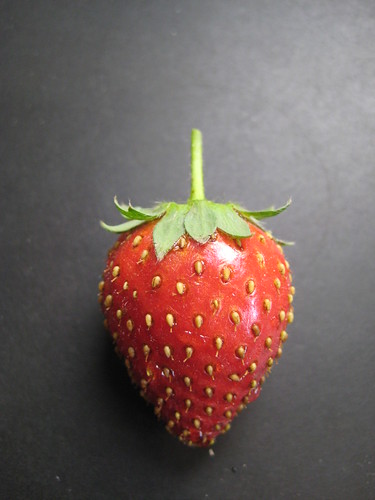
Regular readers of this blog may recall that I purchased a few strawberry plants at the Silverlake Farmer's Market in April. For some reason, these particular strawberries were very slow to set fruit. But, after several months of patient tending, I finally harvested my first ripe strawberries last week--well past the traditional strawberry season.
I actually had a couple of strawberries almost ready to eat several weeks ago, but, to my horror, birds got to them before I could. I found two mangled, red berries lying on the ground next to the strawberry container with some jagged, beak-shaped gashes in them. It was quite a disappointment, although one I am used to considering the lively population of birds and squirrels in our yard. I have now taken precautions and placed some garden netting over my plants. That seems to be doing the trick.
I expect to get many more strawberries before the summer is over. My two plants are both flowering and fruiting quite vigorously. I water them every day in this hot, dry weather and feed them with a bit of liquid fish fertilizer every couple of weeks. That routine is keeping them healthy and happy.
After they're done fruiting, I plan to mulch my strawberry plants heavily and see if they can successfully ride out the winter. They are perennials, so I hope to eat fruit from these plants for several years to come.


One of my first gardening successes was the rescue of a strawberry plant from what was once a fairly large patch (all the others had slowly died) in the backyard of a house we had moved into that year. I was looking at the patch of dead plants when I realized, by noticing the immature dried fruit, that they were strawberries and that one was still alive. I dug it up, put it in a pot with some potting soil and kept it watered. In a little while it recovered and started to produce year round strawberries. Usually 2-5 per week (less in the winter) which I would eat on the porch where I placed the pot as I folded newspapers in predawn preparation for my newspaper route.